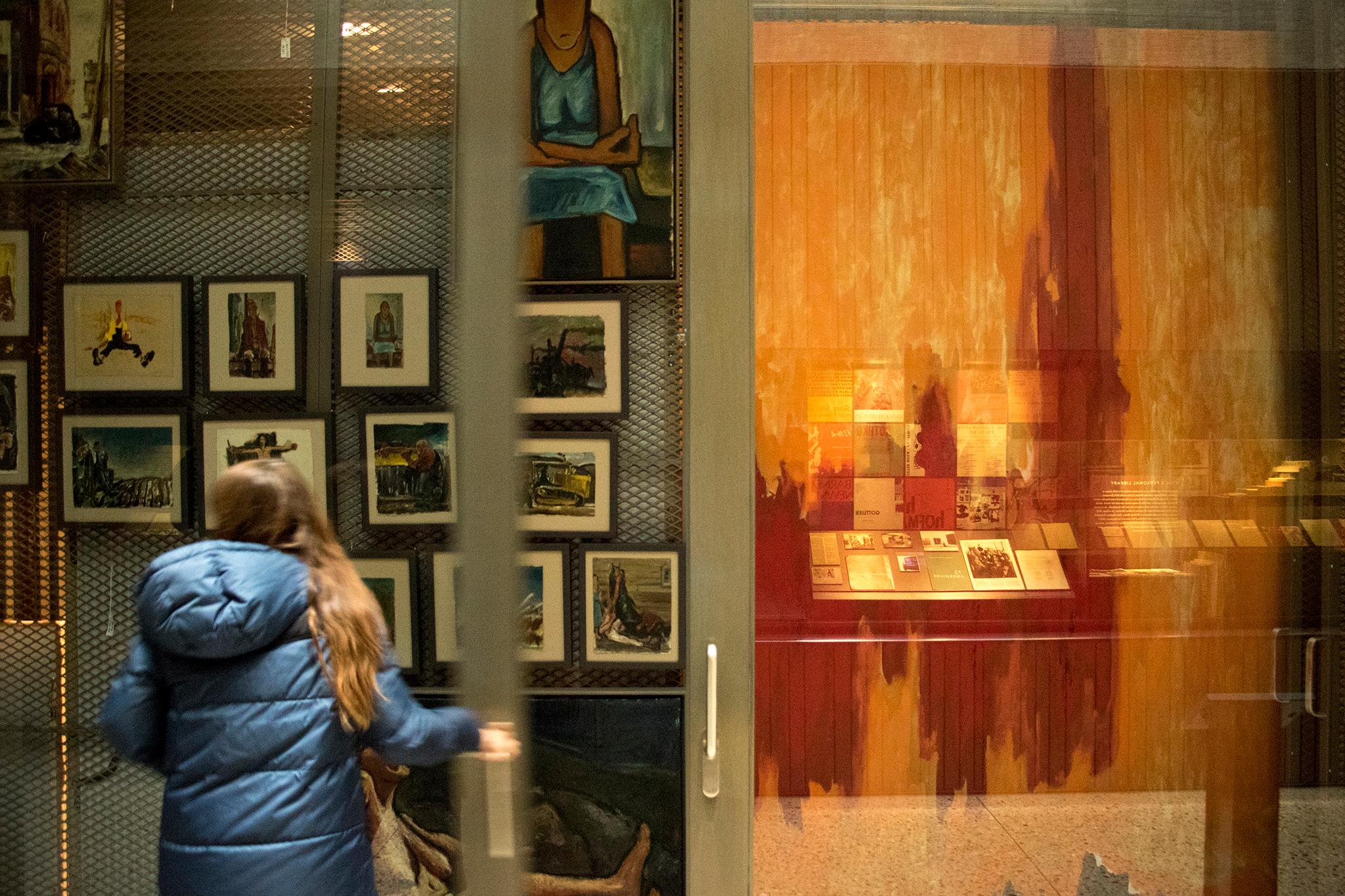By Lisa Kennedy
The Clyfford Still Museum — among the nation’s acclaimed single-artist museums — announced Thursday that Dean Sobel, the museum’s director since its inception in 2005, will be leaving in September. He’s set to become a professor of the practice of art history and museum studies at the University of Denver.
While the announcement might seem like yet another COVID-19-induced wallop to a local arts institution, the timing, said Sobel “is more about the academic calendar than anything else.” Sobel, the university and the museum foresee opportunities to collaborate.
The final show under his direction, Clyfford Still in Maryland, will focus on the abstract expressionist’s late paintings and drawings, created during the period he lived in rural Maryland. It’s slated to open September 18, 2020.
In the next few weeks, the museum’s board of directors will begin “looking for a strong leader with experience but also one with the capacity to be nimble in charting the vision for what CSM can be in a changing world such as virtual workshops and talks,” said board chair Christopher Hunt in an email. “Dean has put the organization on solid footing, which gives us a great base to build upon.”
In 2005, Sobel took on the director role at the yet-to-be-built museum having spent five years at the Aspen Art Museum. Before that, Sobel, who was raised in the Midwest, was the Milwaukee Art Museum’s chief curator and curator of contemporary art. Still’s estate had very clear ideas and directives about which city would become the steward to the trove of 3,400 artworks. Aided by Still’s nephew Curt Freed, a Denver resident, and then mayor John Hickenlooper, Denver won out.
In a piece for Art Forum magazine the year after the museum opened the architecturally beguiling concrete box at West 13th Avenue and Bannock Street in 2011, renown curator Harry Cooper wrote “I am happy to say that Still’s work has not just found a home, it has found a great one.” The art community has echoed that opinion over the years as Sobel and his staff have created a vibrant yet meditative space that honors the estate’s wishes while expanding an understanding of Still’s legacy and the periods in which he worked.
The North Dakota-born artist, a luminary of the post-WWII abstract expressionism movement (along with Jackson Pollock, Mark Rothko, Willem de Kooning and Helen Frankenthaler and others) could be defiant. From one of the city’s more arresting billboards, near the 16th Street mall, Still, who died in 1980, stares out. The copy on the ad is provocative: “The Canvas Was His Ally. The Paint and Trowel Were His Weapons. The Art World Was His Enemy.”
“I’ve said for many years that it was a museum project that was somewhat easy to get right,” Sobel said during a phone call after the announcement. “The paintings are so grand. It’s a very art-centered project. His estate wouldn’t let us put it in auditoriums and restaurants and things. A museum that really is focused on getting the people into the galleries and showing the art works well made the job easier.” According to the museum, attendance has grown by 37 percent since its inaugural year.
Sobel has been teaching at D.U. as an adjunct professor for much of the time he’s been the museum’s leader. “I think I came to the conclusion a few years ago, that I certainly didn’t want another museum job, because I couldn’t have one as great as the Clyfford Still Museum. I’m turning 60 this year, the thought of doing something different that was aligned with my interests and hopefully my skills really appealed to me.”
One of his many duties at D.U. will be to find internships for students. “So I’ll actually be reaching out to the museum about exactly that,” he said.
Sobel also intends to continue addressing an ongoing problem in the arts — and museum culture in particular: inclusion and diversity. “Some of my work has really been informed by my colleagues at the museum — I don’t want to profess to be an expert in this — but we’ve been dedicated at the museum to diversity, equity, access and inclusion,” he said. “As someone working in the museum studies field I’m committed to making the museum profession more diverse, because I can’t tell you how homogenous it is. The museum industry knows it but has a long way to go.”
Meanwhile, the Clyfford Still Museum is set to address not only Sobel’s departure, but the challenges presented by the current COVID-19 crisis. The museum “is trying to approach all of these changes as opportunities to generate fresh perspectives and reach new audiences through ways that we’ve only just begun to explore,” wrote board chair Hunt. ” CSM is used to operating within limitations, this pandemic is just a presenting a constraint of a different variety.”












